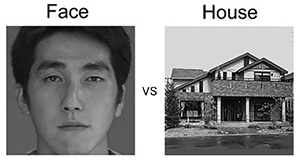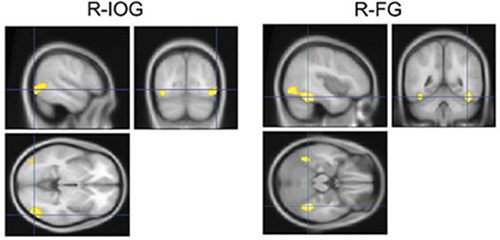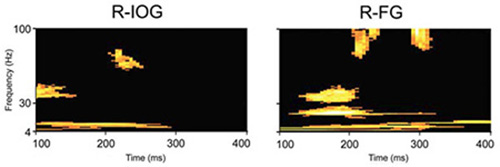SATO Wataru Laboratory
Time course of gamma-band oscillation associated with face processing in the inferior occipital gyrus and fusiform gyrus: A combined fMRI and MEG study
(Uono, Sato, Kochiyama, Kubota, Sawada, Yoshimura, & Toichi: Hum Brain Mapp)
Debate continues over whether the inferior occipital gyrus (IOG) or the fusiform gyrus (FG) represents the first stage of face processing and what role these brain regions play.
We investigated this issue by combining functional magnetic resonance imaging (fMRI) and magnetoencephalography (MEG) in normal adults.
Participants passively observed upright and inverted faces and houses.
First, we identified the IOG and FG as face-specific regions using fMRI.
We applied beamforming source reconstruction and time-frequency analysis to MEG source signals to reveal the time course of gamma-band activations in these regions.

The results revealed that the right IOG showed higher gamma-band activation in response to upright faces than to upright houses at 100 ms from the stimulus onset.
Subsequently, the right FG showed greater gamma-band response to upright faces versus upright houses at around 170 ms.
The gamma-band activation in the right IOG and right FG was larger in response to inverted faces than to upright faces at the later time window.


These results suggest that (1) the gamma-band activities occurs rapidly first in the IOG and next in the FG and (2) the gamma-band activity in the right IOG at later time stages is involved in configuration processing for faces.
Return to
Recent Research.
Return to
Main Menu.


